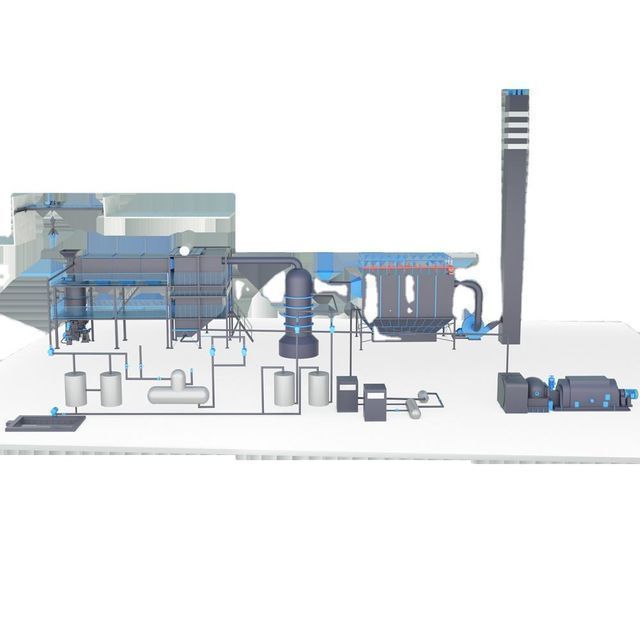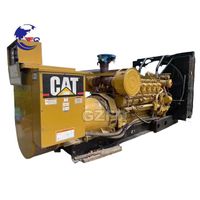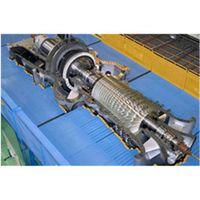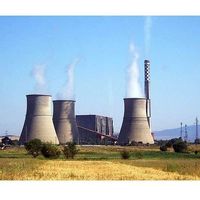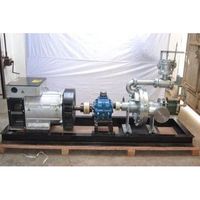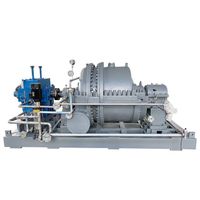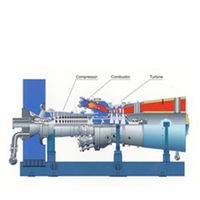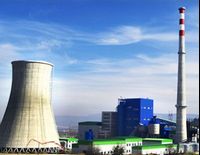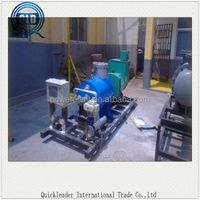Haiqi High-tech Biomass Waste Gasifier Power Plant Generator Set Manufacturer
-
Supplier: Henan Haiqi Environmental Protection Technology Co., Ltd. -
Region: Henan, China -
Contact: Mr JESSE HE -
Price: $286000.00 /set -
Min. Order: 1 set
Product details
| Applicable industries: | Manufacturing plants, farms, energy and mining, all industrial power, incinerators, oil-fired boilers, coal-fired boilers, asphalt heating equipment, drying equipment, aluminum melting furnaces, spray drying lines, generator sets | Video external inspection: | if |
| Supply capacity: | 200 sets per year | Health status: | new |
| Showroom location: | India, Russia, Thailand, Sri Lanka, South Africa, Nigeria | Main selling point: | Exhaust Gasification Technology |
| Mechanical test report: | if | Generator Type: | Waste gasification power generation |
| Packaging Preview: | Warranty: | 1 year | |
| place of origin; place of origin: | Henan, China | port: | Lianyungang or Qingdao Port |
| type: | dynamo | brand: | Hatch |
| model: | HQ-LRF 0.2MW | application: | power generation |
| payment terms: | letter of credit, wire transfer | Marketing Type: | Power Products |
| efficiency: | high efficiency | Raw materials: | garbage of urban life |
| Packaging Details: | Wooden box or plastic film edging | Vaporizer Type (3): | Downdraft Fixed Bed Gasifier |
| Output voltage (V): | 380 | Core Components Warranty: | 1 year |
| Core components: | PLC, Vaporizer/Filter |


Biomass gasification power plant: The production capacity ranges from 200kw to 3000kw, 1kg of woody biomass powers 1kw, 1kw of woody biomass produces 2-3m3/h of syngas, and the calorific value of syngas is 1100-1500kcal/m3.


Biomass gasification refers to the thermochemical process of converting biomass fuels into combustible gases. in biomass
During gasification, water vapor, free or bound oxygen, reacts with the carbon in the fuel to form a combustible gas.
The biomass gasification process is complex, and the gasification reaction conditions are also different. However, all
The gasification reaction process mainly includes biomass drying, pyrolysis, oxidation and reduction processes.
The Haiqi gasification power generation process includes three aspects. One is biomass gasification, which converts solid biomass into gaseous fuels; the other is gas purification. The gasified gas contains certain impurities, including ash, coke and tar. , Impurities need to be removed through the purification system to ensure the normal operation of gas power generation equipment; The third is gas power generation, using gas turbines or gas internal combustion engines to generate electricity.
In some processes of biomass gasification plants, in order to improve the power generation efficiency, waste heat boilers and steam turbines can be added to the power generation process.
During gasification, water vapor, free or bound oxygen, reacts with the carbon in the fuel to form a combustible gas.
The biomass gasification process is complex, and the gasification reaction conditions are also different. However, all
The gasification reaction process mainly includes biomass drying, pyrolysis, oxidation and reduction processes.
The Haiqi gasification power generation process includes three aspects. One is biomass gasification, which converts solid biomass into gaseous fuels; the other is gas purification. The gasified gas contains certain impurities, including ash, coke and tar. , Impurities need to be removed through the purification system to ensure the normal operation of gas power generation equipment; The third is gas power generation, using gas turbines or gas internal combustion engines to generate electricity.
In some processes of biomass gasification plants, in order to improve the power generation efficiency, waste heat boilers and steam turbines can be added to the power generation process.

Model | Headquarters - SRF0.2 | Headquarters - SRF0.4 | Headquarters - SRF0.5 | Headquarters - SRF0.8 |
power generation | 200kW | 400kW | 500kW | 800kW |
Rated frequency | 50/60 Hz | 50/60 Hz | 50/60 Hz | 50/60 Hz |
Gas calorific value | > 1200-1500Kcal/Nm3 | > 1200-1500Kcal/Nm3 | > 1200-1500Kcal/Nm3 | > 1200-1500Kcal/Nm3 |
Gasifier Type | Fixed bed gasifier | Fixed bed gasifier | Fixed bed gasifier | Fixed bed gasifier |
Biomass consumption (Kg/Hr) | 200-300kg | 400-500kg | 500-600kg | 800-900kg |
Gas production (Nm3/h) | 400-600m3 | 800-1000m3 | 1000-1200m3 | 1600-1800m3 |
noise | dB(A)≤85 | dB(A)≤85 | dB(A)≤85 | dB(A)≤85 |
Raw materials for biomass gasification power plants
Applicable raw materials: a wide range of raw materials, such as straw, sawdust, rice husk, palm husk, bagasse and other agricultural and forestry wastes, particle size: 30-50mm, moisture content: less than 20%
Biomass gasification power generation system generator set
Recommended use:8300 or 6300 biomass gas generator set, the advantages of this type of generator set are large cylinder bore, low speed, high torque, suitable for low calorific value gas.
Model selection:Below 500kw/h, you can choose single machine to generate power: above 500kw/h, it is recommended to use multiple machines in parallel.
Model selection:Below 500kw/h, you can choose single machine to generate power: above 500kw/h, it is recommended to use multiple machines in parallel.


●Biomass gasification power generation technology is a unique way of utilizing biomass energy that is different from other renewable energy sources. Biomass gasification plants have three characteristics:
● First, biomass gasification power generation technology has sufficient flexibility. Since biomass gasification power generation can use internal combustion engines, gas turbines, and even combine waste heat boilers and steam power generation systems.
● 2. The cleanliness of biomass gasification power generation technology is good. Biomass itself is a kind of renewable energy, which can effectively reduce the emission of harmful gases such as CO2 and SO2. The temperature of the gasification process is generally low (about 700-900oC), and the amount of NOx generated is very small, so the biomass gasification plant can effectively control the NOx emission;
●The third is the economy. The flexibility of biomass gasification power generation technology can ensure that the technology is efficient and economical on a small scale. At the same time, the gas power generation process is simple and the equipment is compact. This also makes biomass gasification power generation technology more renewable than other renewable energy sources. The investment in energy power generation technology is small, so overall, biomass gasification power generation technology is the most economical power generation technology among all renewable energy technologies, and the comprehensive power generation cost is close to the level of small conventional energy power generation.
● First, biomass gasification power generation technology has sufficient flexibility. Since biomass gasification power generation can use internal combustion engines, gas turbines, and even combine waste heat boilers and steam power generation systems.
● 2. The cleanliness of biomass gasification power generation technology is good. Biomass itself is a kind of renewable energy, which can effectively reduce the emission of harmful gases such as CO2 and SO2. The temperature of the gasification process is generally low (about 700-900oC), and the amount of NOx generated is very small, so the biomass gasification plant can effectively control the NOx emission;
●The third is the economy. The flexibility of biomass gasification power generation technology can ensure that the technology is efficient and economical on a small scale. At the same time, the gas power generation process is simple and the equipment is compact. This also makes biomass gasification power generation technology more renewable than other renewable energy sources. The investment in energy power generation technology is small, so overall, biomass gasification power generation technology is the most economical power generation technology among all renewable energy technologies, and the comprehensive power generation cost is close to the level of small conventional energy power generation.
Biochar is classified by product:
Biochar is a by-product of biomass pyrolysis and gasification, which can be used as activated carbon, barbecue charcoal, soil carbon-based fertilizer, animal feed additive, etc.

The advantages of biochar for soil:
●Absorbs water and moisturizes, 1 ton of carbon absorbs 3 tons of water
●Heavy metal adsorption and solidification
●Biochar can increase the low temperature by 1-3 degrees
●Biochar can loosen the soil and increase the permeability of the soil
●Nitrogen fixation and fertilizer retention, prolonging and improving the fertility of carbon-based carrier fertilizers
●Biochar can inhibit pests, prevent diseases and disasters
●One ton of straw can produce 300-350kg black carbon
The carbonaceous solid is called biological black carbon, which is a general term for mixtures under organic carbon, mainly composite organic compounds such as cellulose, hydroxyl, acid organic acid derivatives, furans, pyrans, dehydrated sugars, phenols, paraffins and olefin derivatives. carbon mixture.
●Heavy metal adsorption and solidification
●Biochar can increase the low temperature by 1-3 degrees
●Biochar can loosen the soil and increase the permeability of the soil
●Nitrogen fixation and fertilizer retention, prolonging and improving the fertility of carbon-based carrier fertilizers
●Biochar can inhibit pests, prevent diseases and disasters
●One ton of straw can produce 300-350kg black carbon
The carbonaceous solid is called biological black carbon, which is a general term for mixtures under organic carbon, mainly composite organic compounds such as cellulose, hydroxyl, acid organic acid derivatives, furans, pyrans, dehydrated sugars, phenols, paraffins and olefin derivatives. carbon mixture.

Biomass gasification power generation in Russia




VIEW MORE
You may like
-
Silent diesel generator sets are suitable for Yanmar, Perkins, Caterpillar, Doosan, Weichai, Shangchai, Yuchai, Volvo, Hyundai electric generators

-
DTEC at the best prices H-80 Gas Turbine Generators for Gas Turbine Power Plants

-
Coal-based NS Energy, Biomass Steam Power Plant, Power Capacity: Up to 15 MW

-
15 KW TURBINE FOR SOLAR ENERGY

-
CE certified high quality 20kw-200kw automatic control steam turbine

-
DTEC at the best prices SGT-800 Gas Turbine Generators for Gas Turbine Power Plants

-
Coal-fired and biomass power plant EPC turnkey project

-
Small low pressure steam turbine

-
Portable Mobile Power Station Solar Generator 100W for Camping Outdoor Car Power Station

-
Steam Turbine Parts and Power Generation Micro Turbine Generators

Related Search
biomass power plants in usa
agricultur wast power plant suppliers
high tech concret mixer plant suppliers
mini waste plastic pyrolysis plant
high quality off grid solar power inverter 2000w
automat wast tyre pyrolysi plant to diesel suppliers
waste recycling plastic plant
mini solar power plant
power plant seed suppliers
oil power plant

